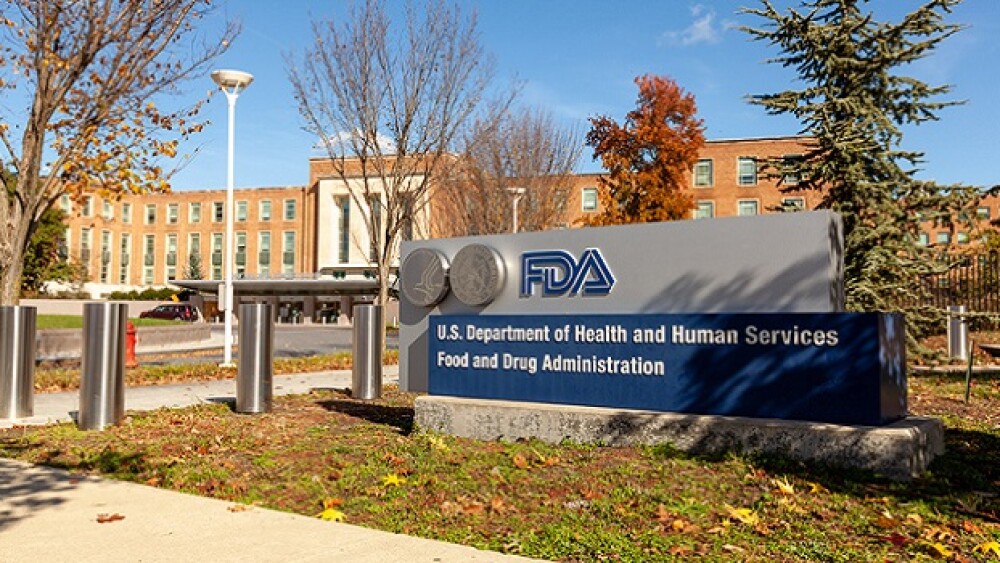Experts express concern that last week’s unprecedented FDA layoffs will trigger a little-known mechanism that could result in a “disaster” the Trump administration doesn’t see coming.
Once upon a time, in the late 20th century, European patients had a better chance of accessing novel medicines than their U.S. counterparts.
This was “not because [Europe] was a more attractive market, rather because . . . the regulatory system of the United States, and that of the FDA in particular, was broadly inefficient,” Alexander Gaffney, regulatory policy and intelligence leader at AgencyIQ, a Politico publication, told BioSpace.
The main reason for that was that the agency employed too few drug reviewers, Gaffney explained. So the FDA, industry and Congress put their heads together to brainstorm a way to fix the problem.
In 1992, the Prescription Drug User Fee Act (PDUFA) was born. Under the new legislation, the FDA was permitted to collect fees from pharma companies filing product applications for review, leading to a significant influx of cash—user fees accounted for $3.3 billion of the FDA’s $6.9 billion 2025 budget. The agency was able to hire additional reviewers, and today, the U.S. typically enjoys a first-market advantage. When it comes to new cancer therapies, for example, patients in the U.S. gain access a median of 227 days earlier than those in Europe, according to a 2021 study.
Before the PDUFA program, the average new drug application review time was 2.5 years, David Beier, managing director at Bay City Capital, wrote on LinkedIn Monday. “Today the average review time is 10 months.”
But this advantage is now at risk. Last week, Gaffney issued a stark warning: the unprecedented layoffs enacted last week across the Department of Health and Human Services (HHS) could endanger this program. This, he assessed, could lead to a “catastrophic collapse” due to a little-known “trigger mechanism” written into the PDUFA agreement.
Aside from industry user fees, the FDA is funded by congressional appropriations. The PDUFA trigger mechanism is intended to protect the pharmaceutical industry’s interests if Congress isn’t holding up its end of the bargain: i.e., funding the FDA to a level determined by a specific formula.
“What you want to ensure as an industry is that your money is actually going to be used in the way in which you intend it to be used, which is not like a foreign concept or principle,” Gaffney said. If the mechanism is triggered, “That would result in the FDA no longer having access to the remaining user fee funding unless the U.S. government came back into compliance with the appropriated amounts.”
FDA staff familiar with the program told Gaffney that “they felt like they were either about to be out of compliance or were at extraordinary danger of being out of compliance with that trigger as a result of all of these reduction in forces (RIF) that were happening,” he recounted.
To compound the issue, Gaffney continued, “a lot of the people at the agency who have the knowledge of [the program], or the ability to even do timekeeping kind of activities, had been subject to the RIFs.” In total, more than half of senior leadership has left the agency, of their own accord or otherwise, including Patrizia Cavazzoni, who resigned as director of the FDA’s Center for Drug Evaluation and Research; Peter Marks, former head of the Center for Biologics Evaluation and Research who was forced to resign late last month; and Peter Stein, director of CDER’s Office of New Drugs who resigned last week.
“Therefore, there was no one left to kind of go, ‘ah, yes, this is a problem,’” Gaffney said.
Beier expressed similar concern in his LinkedIn post. “The biggest winners [of shorter FDA reviews] are patients waiting for new treatments and cures,” he wrote. “Reversing this trend is bad news for everyone.”
Courting Consequences
There is still time to ward off catastrophe because “the actual trigger happens at the end of the fiscal year,” Gaffney explained. However, this would require HHS taking steps to ensure the trigger level isn’t reached.
Robert F. Kennedy Jr., who took the helm as Health Secretary in February, has long been critical of what he perceives as pharma’s influence over the FDA, including the so-called ‘revolving door’ where employees move back and forth between the agency and industry.
“So far, there is no evidence that President Trump and Secretary Kennedy would make an exception to a government-wide RIF and severe budget cuts in order to preserve an agency they think is in the hands of industry and making decisions that they see as antithetical to the public interest,” Steven Grossman, a policy and regulatory consultant, wrote in a blog entry on Monday.
But experts agree that losing industry funding could have considerable implications for Americans’ access to novel medicines.
In a February letter organized by the advocacy group No Patient Left Behind, industry experts, patient advocates and investors also prevailed upon the new administration to protect the FDA’s “gold standard” reputation.
“The US is the undisputed global leader in medical product innovation thanks in no small part to the Food and Drug Administration’s (FDA) scientific expertise and regulatory transparency,” they wrote. “However, we are very concerned that public health will be put at risk if arbitrary and excessive staffing cuts are made to the FDA.”
The PDUFA is renegotiated by FDA and industry every five years. That process will begin this year, with Kennedy due to submit user fee agreements to Congress by January 2027.
“Over the last 15 years, we’ve spoken with dozens of FDA and industry staff who have been involved in negotiations,” Gaffney wrote in his article. “[E]ach has said that the negotiating process requires deep understanding of how the FDA works—its problems, its resource constraints, how activities get adequately funded. That level of understanding takes many years, or decades, to accumulate.” Collective years that are now gone.
Overall, Grossman was not optimistic. “In short, we are going to be trying to change the minds of people who are indifferent to what most of us value,” he wrote. “We may see a disaster coming, but they do not.”






